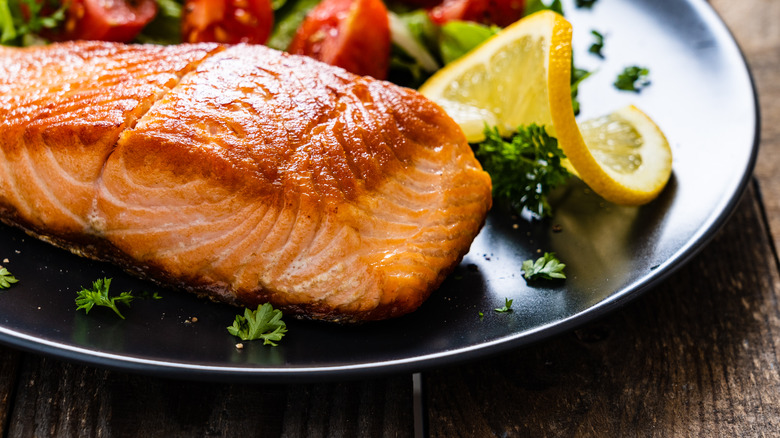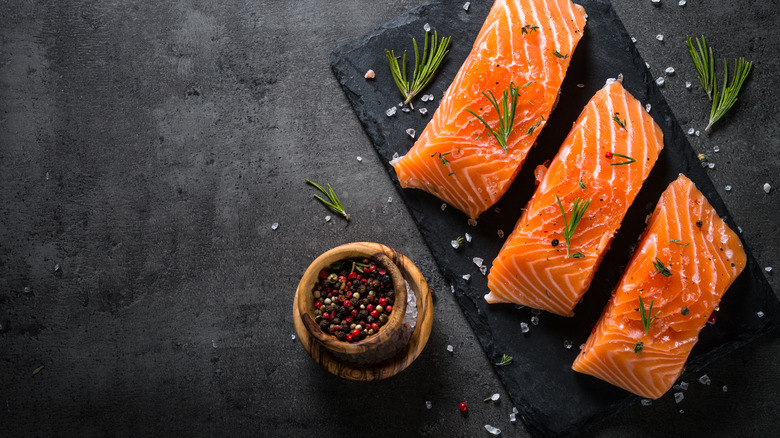Here's What To Actually Do About The White Stuff On Salmon
Are you a fan of salmon? We can tell you that we are. Out of all the fish in the sea (or rivers, as the case may be) this rosy-hued specimen is one of our very favorites. Rich in healthy omega-3 fats, salmon has a mild flavor and a luxurious texture that make it a go-to for us, whether we're frying up some salmon patties, fancying up a bagel with some smoked salmon, or simply searing some filets on the grill or in a pan.
If you've ever done the latter, you may have noticed that sometimes your salmon gets a layer of rubbery white stuff on it. This substance is called albumin, and it's perfectly harmless and totally edible — but it's still an enemy to picture-perfect salmon (via Lifehacker). Luckily, there's an easy fix that will leave your salmon deliciously tasty as well as free of that pesky white layer.
Brine to the rescue
According to Lifehacker, albumin is a liquid protein found in raw fish. When the fish is cooked — particularly if it's cooked fast over high heat, as in grilling or searing — the muscles in the fish contract, squeezing this white stuff to the surface, where it coagulates and forms that no-too-appetizing, jiggly coating. Albumin doesn't taste like much and it's totally safe to eat, but it doesn't look appealing and you might not want to serve whitened fish filets to your guests. Luckily, there's an easy solution that you can use to cook up rosy, albumin-free salmon — a quick brine in a 9% salt solution made up of a tablespoon of salt per cup of water.
The salt in the brine partially dissolves the muscle fibers near the surface of the fish, so that when it's cooked, they don't contract and therefore don't squeeze out any white albumin. Another benefit? The brief 10 minute salt soak seasons the fish, so you don't have to add any additional sodium. Too lazy to mix up a simple brine? You can also opt to dry-brine your way away from albumin. Just mix one part sugar to two parts salt, pat it over your fish, let it sit for 15 minutes, and then go ahead and cook. With these methods at your disposal, you'll forget that oozy white stuff exists at all.

